Abstract
Purpose
To report an unusual case of anterior ischemic optic neuropathy and choroidal ischemia after injection of autologous fat into the periorbital region due to embolism of the short posterior ciliary artery without involving the retinal artery.
Case summary:
A 39-year-old female presented with sudden blurred vision, diplopia and ptosis of her left eye immediately after receiving an autologous fat injection into the periorbital area. The first ophthalmologic examination revealed that the patient s left eye had decreased visual acuity, relative afferent pupillary defect, exotropia, and hypertropia. Fundus examination of the left eye showed disc edema. Fluorescein angiography showed multiple choroidal vascular filling defects at the early phase and wedge-shaped or geographic fluorescein staining at the superior, inferior, and temporal peripheral areas at late phase. Humphrey visual field test results disclosed an inferior visual field defect. On the follow-up visit after oral steroid therapy (prednisolone 30 mg) for 7 days, diplopia disappeared and visual acuity recovered to 1.0. The inferior visual field defect and relative afferent pupillary defect were still present.
References
1. Chajchir A, Benzaquen I. Fat-grafting injection for soft-tissue augmentation. Plast Reconstr Surg. 1989; 84:921–34.

2. Joo MJ, Kim JW, Yang JE, Lee JH. Retinal and choroidal vascular occlusion following autologous fat injection into the temple area. J Korean Ophthalmol Soc. 1992; 33:422–5.
3. Park SH, Sun HJ, Choi KS. Sudden unilateral visual loss after autologous fat injection into the nasolabial fold. Clin Ophthalmol. 2008; 2:679–83.
4. Yoon SS, Lee TG, Chang DI, Chung KC. A Case of Acute Stroke after Autologous Fat Injection. J Korean Neurol Assoc. 2002; 20:699–701.
5. Matsuo T, Fujiwara H, Gobara H, et al. Central retinal and posterior ciliary artery occlusion after intralesional injection of sclerosant to glabellar subcutaneous hemangioma. Cardiovasc Intervent Radiol. 2009; 32:341–6.

6. Shafir R, Cohen M, Gur E. Blindness as a complication of subcutaneous nasal steroid injection. Plast Reconstr Surg. 1999; 104:1180–2.

7. Yagci A, Palamar M, Egrilmez S, et al. Anterior segment ischemia and retinochoroidal vascular occlusion after intralesional steroid injection. Ophthal Plast Reconstr Surg. 2008; 24:55–7.
8. Teimourian B. Blindness following fat injections. Plast Reconstr Surg. 1988; 82:361.
9. Danesh-Meyer HV, Savino PJ, Sergott RC. Case reports and small case series: ocular and cerebral ischemia following facial injection of autologous fat. Arch Ophthalmol. 2001; 119:777–8.
10. Dreizen NG, Framm L. Sudden unilateral visual loss after autologous fat injection into the glabellar area. Am J Ophthalmol. 1989; 107:85–7.

11. Egido JA, Arroyo R, Marcos A, Jimenez-Alfaro I. Middle cerebral artery embolism and unilateral visual loss after autologous fat injection into the glabellar area. Stroke. 1993; 24:615–6.

12. Lee DH, Yang HN, Kim JC, Shyn KH. Sudden unilateral visual loss and brain infarction after autologous fat injection into nasolabial groove. Br J Ophthalmol. 1996; 80:1026–7.

13. Stephen J, Vincent R. Plastic surgery. 2nd ed.Philadelphia: Elsevier health Science;2006. p. 546–9.
Figure 1.
Initial photograph of the patient shows mild ptosis, exotropia and hypertropia of her left eye.
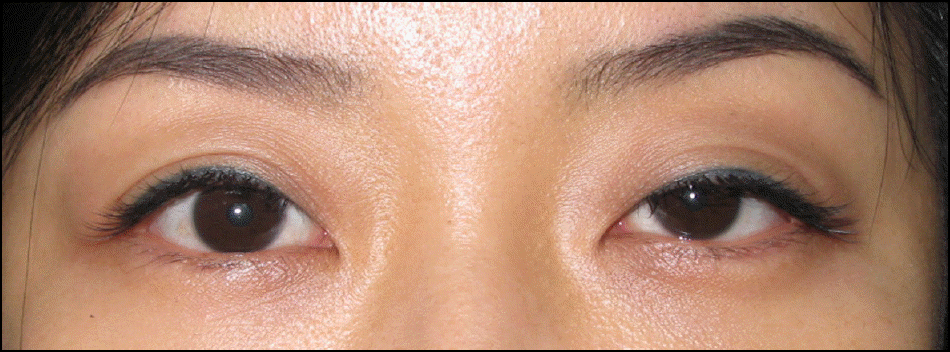
Figure 2.
(A) Composite photograph of nine-cardinal gaze at the first visit reveals left exotropia, hypertropia and significant limitation in adduction. (B) Hess screen test at the first visit reveals medial rectus muscle and inferior rectus muscle underaction of her left eye.
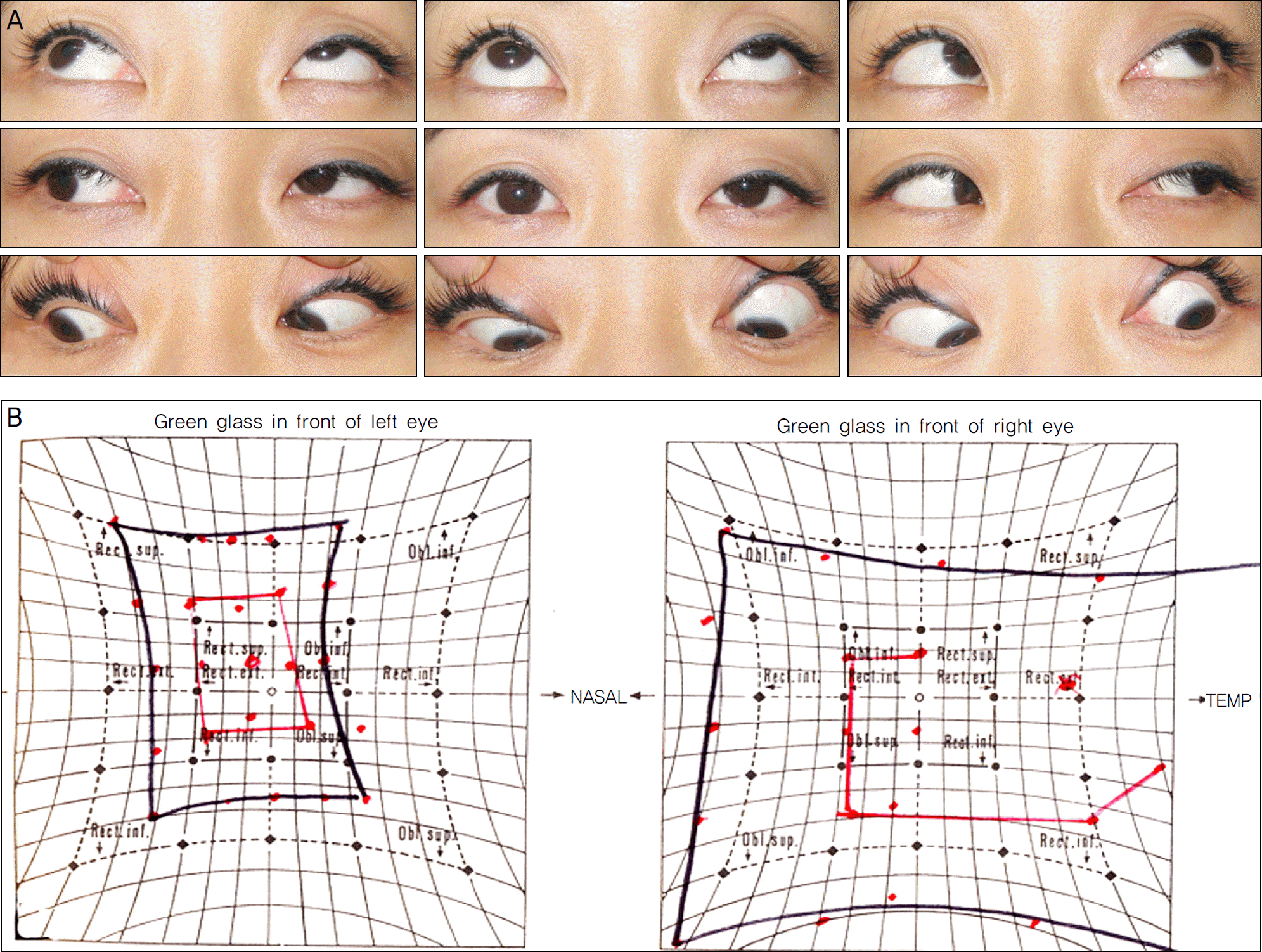
Figure 3.
(A) Humphrey 24–2 visual field at the first visit showing inferior visual field defect. (B) Pattern visual evoked potential (VEP) at the first visit showing delayed p100 latency (137 ms).
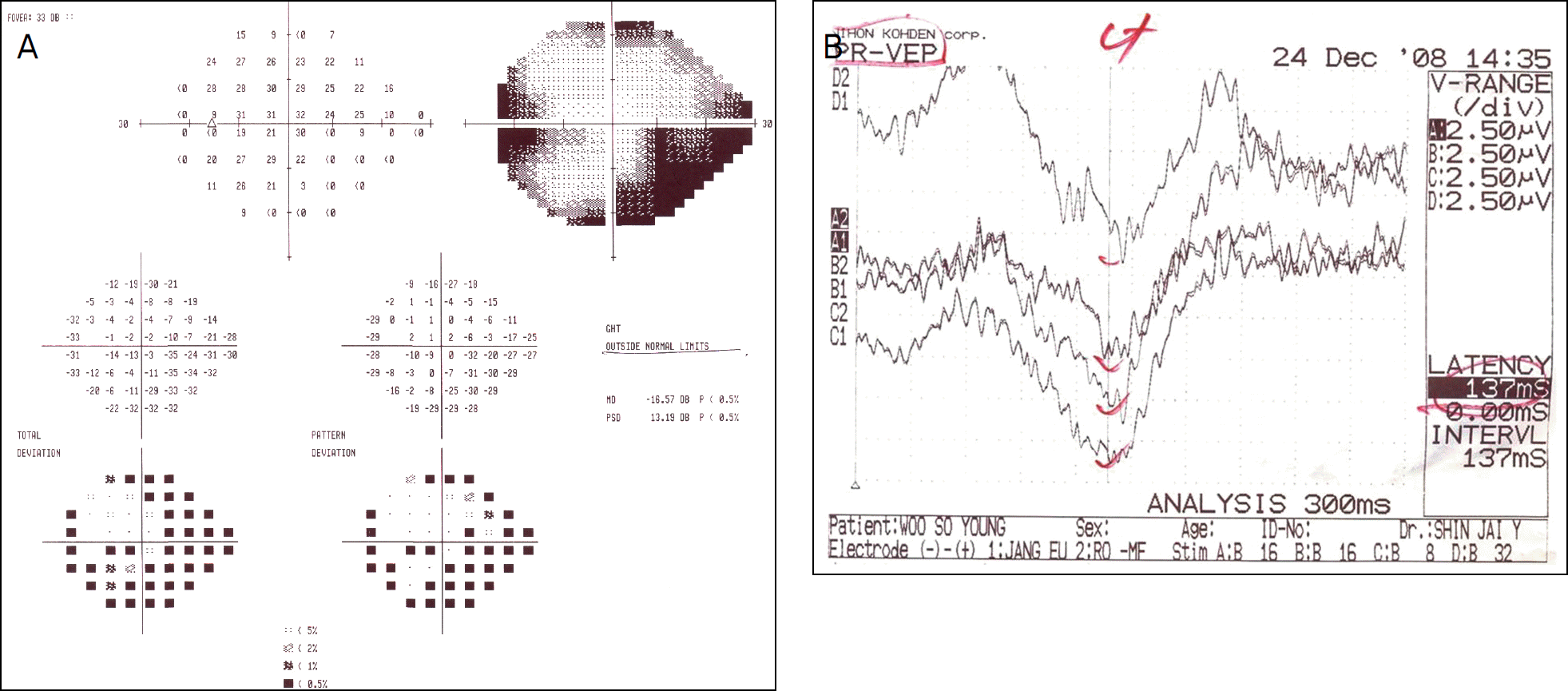
Figure 5.
Initial fluorescein angiogram of the left eye shows multiple choroidal vascular filling defects and delayed filling of the optic disc at the early phase (A) and wedge- shaped or geographic fluorescein staining at the superior, inferior and temporal peripheral area at the late phase (B, C and D).
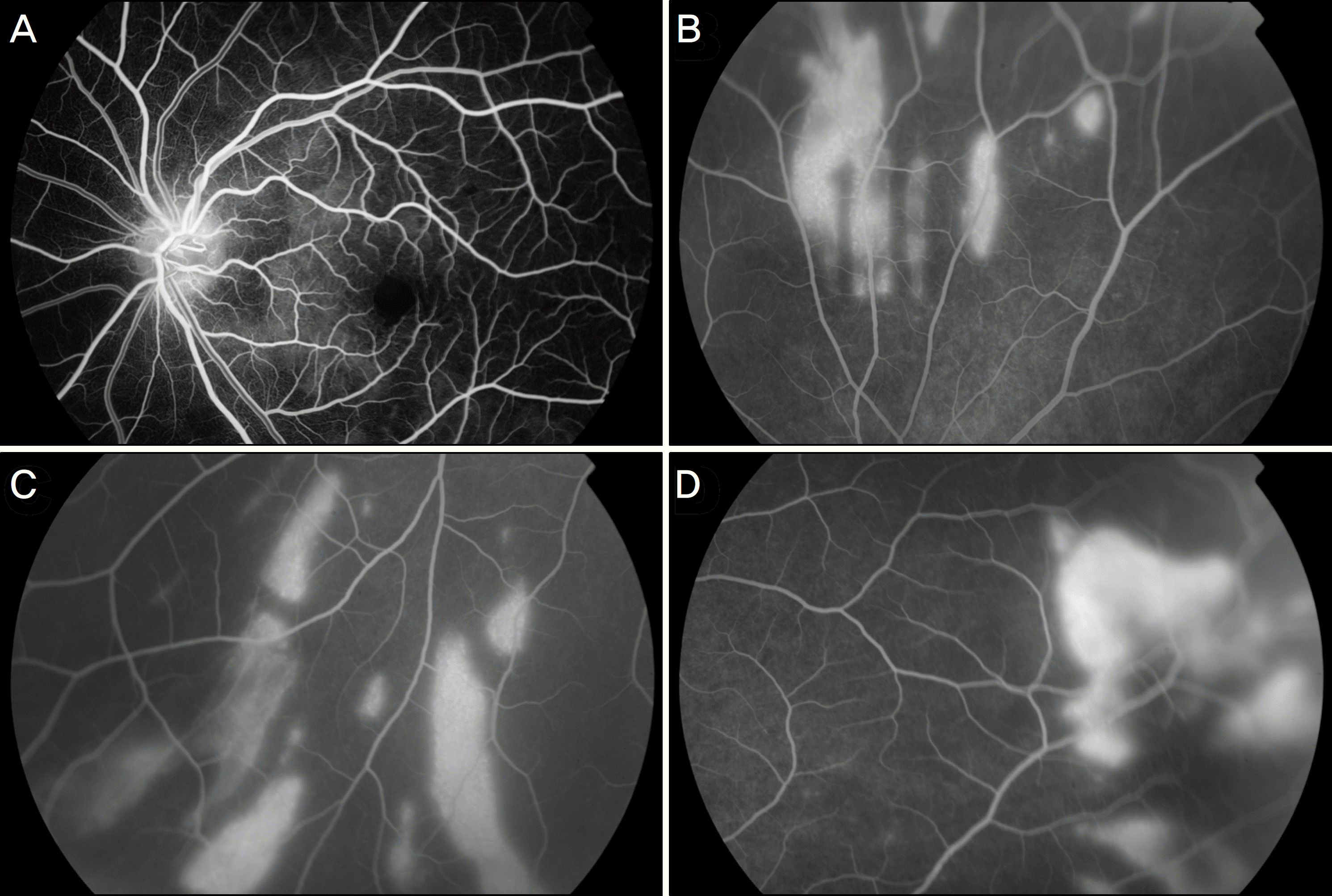
Figure 6.
Humphrey visual field at 7 days after the accident showing remained inferior visual field defect.
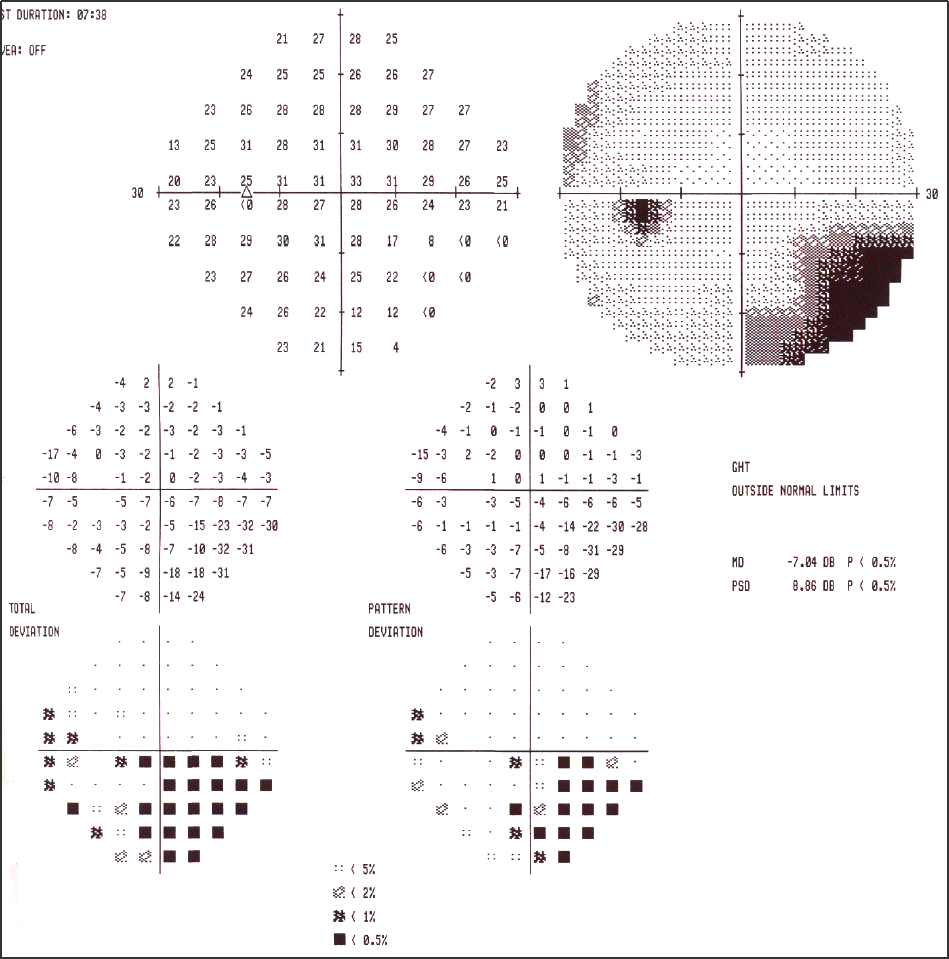




 PDF
PDF ePub
ePub Citation
Citation Print
Print


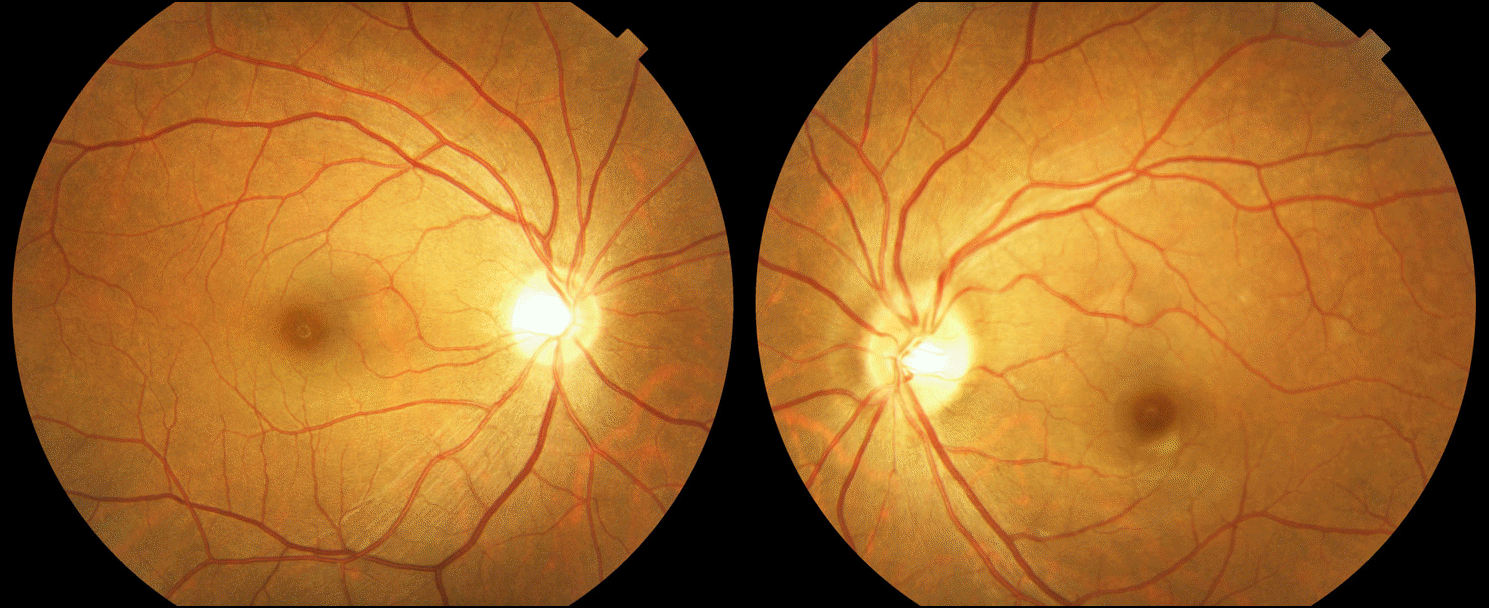
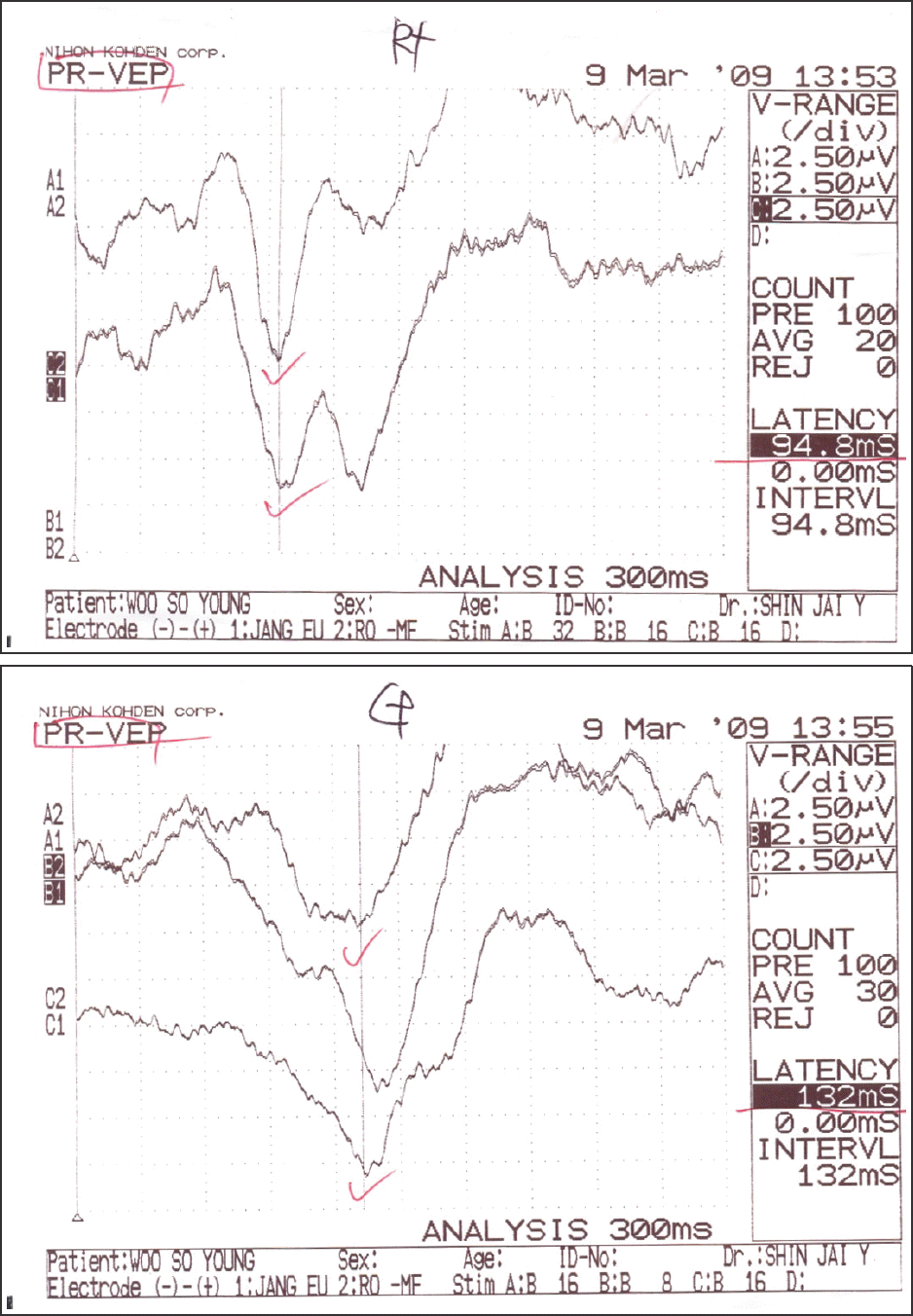
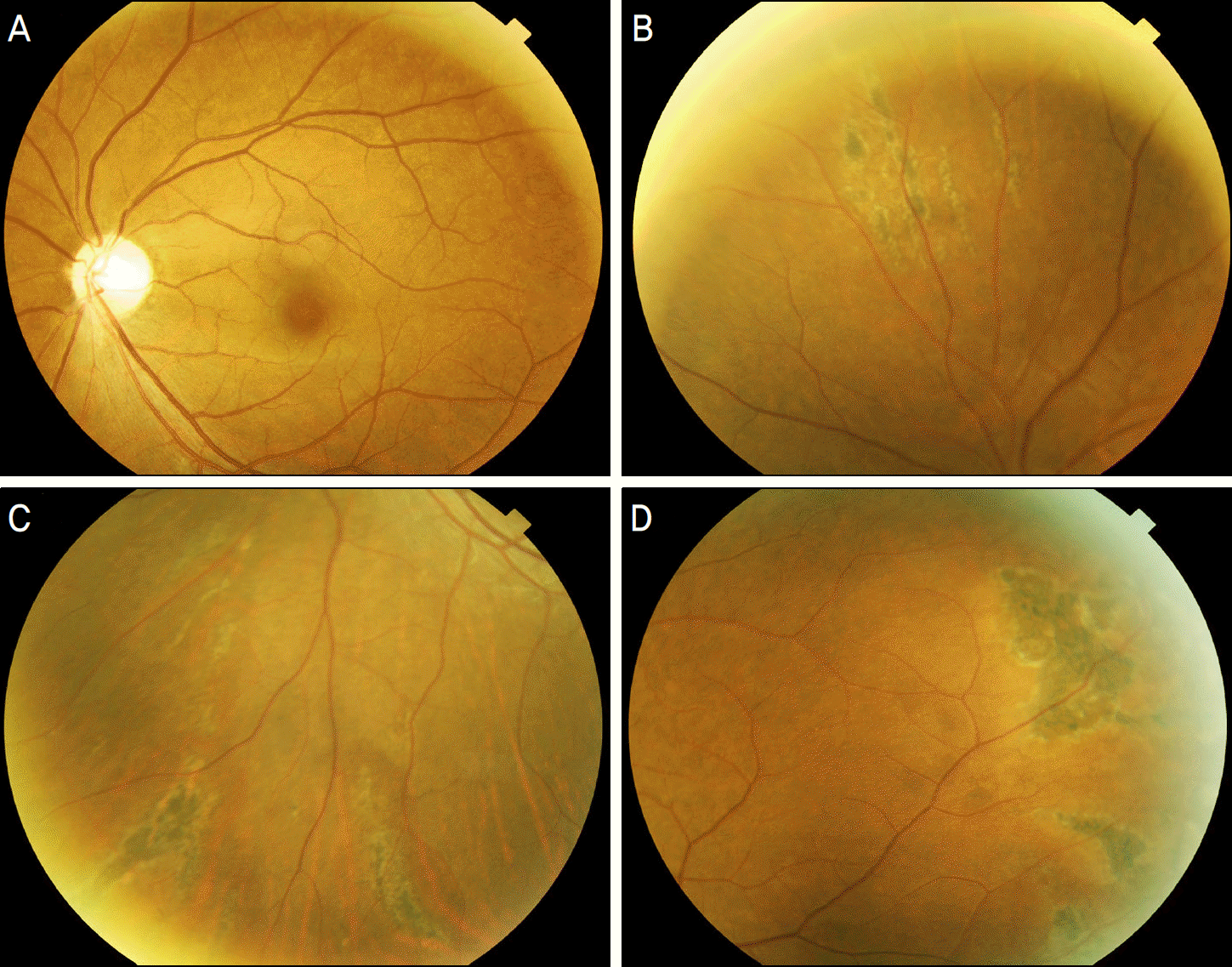
 XML Download
XML Download